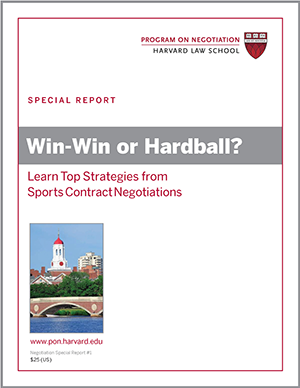
It used to be that when negotiating counterparts were located far apart, someone would need to travel if the parties wanted to do business face-to-face. These days, you only need to set up a videoconference on an app such as Skype or Google Hangout to interact in real time.
At first glance, videoconferencing might seem to be a win-win negotiation strategy with all the advantages of in-person meetings and few of the costs. Yet in ways large and small, negotiating via video is not the same as being there, writes Creighton University School of Law professor Noam Ebner in a chapter in The Negotiator’s Desk Reference (DRI Press, 2017). When deciding whether to go the extra mile or negotiate from the comfort of our office, we need to consider and address the downsides.
The Benefits of Negotiating Via Video
In recent years, videoconferencing has become simple and relatively cheap to use. Negotiators need little more than a free app on their computer or smartphone and an agreement with their counterpart to link up at a certain time and date.
Videoconferencing is widely perceived as a “rich” communication medium that allows for win-win bargaining and mutual gain, because it allows people to learn from each other’s visual and verbal cues. Through laughter, frowns, raised voices, and hand gestures, negotiators can build rapport and understanding. In addition to allowing parties to communicate both verbally and nonverbally, videoconferencing enables them to jointly view and discuss documents, slide shows, and videos.
By comparison, e-mail has been called an “impoverished” medium because negotiators must grasp one another’s meaning through written words alone. As a result, misunderstandings are common. Similarly, phone calls lack the visual cues that can tell us, for example, when someone is listening intently or scowling in reaction to what she’s just heard.
The Limitations of Negotiating Via Video
Before we replace all our business trips with Skype chats, Ebner recommends that we consider a number of ways in which videoconferences differ from in-person negotiations and stand in the way of win-win negotiation strategy. Here are three of them:
1. Limited visibility. When videoconferencing, we see less of the other person and his environment than we do when negotiating in person. Individuals typically appear as “talking heads,” with only their heads and upper torsos showing on the screen. In addition, a weak Internet connection or poor technology can result in a grainy or choppy image that makes it difficult to read a counterpart’s facial expressions. Background noise or a “busy” background may also cause distractions.
Moreover, it’s typically impossible for negotiators to truly make eye contact during a videoconference, notes Ebner. Because computer cameras tend to be located at the top of the screen, when we stare at our screen, we appear to be looking downward rather than into our counterpart’s eyes. This lack of eye contact might impair negotiators from building trust and rapport.
To compensate for such visual deficits and turn videoconferencing into a win-win strategy, keep your hand gestures within the frame, and minimize sound and visual distractions on your end. Make sure the area behind you is neutral and professional, and dress for business. Finally, resist the urge to check your e-mail or attend to matters offscreen.
2. Technical difficulties. Anyone who videoconferences regularly knows that technical difficulties are par for the course. It’s not unusual to have trouble linking up or to suddenly lose audio and/or video in the middle of a meeting. Such glitches may interrupt the flow of a negotiation or leave us feeling irritated. Practice using new videoconferencing apps before important meetings, but keep in mind that technical difficulties may still crop up.
3. Privacy and security challenges. When the privacy of a negotiation is paramount, videoconferencing may pose special concerns, notes Ebner. Although the possibility of being secretly recorded is a risk in any type of negotiation, video negotiations may be especially easy for your counterpart—or perhaps some other interested party—to record. In addition, there could be others quietly listening in and perhaps even advising your counterpart offscreen. For this reason, when security is critical and trust is low, you may want to make an extra effort to negotiate in person.
Overall, videoconferencing offers unparalleled convenience as compared to face-to-face negotiations, but we need to weigh these advantages against the potential costs to ensure that it’s a win-win negotiation strategy. One smart solution would be to meet periodically in person and negotiate via video, e-mail, and phone in between the face-to-face meetings.
Have you found videoconferencing to be an effective win-win negotiation strategy?





